Black bean steamed pork ribs
Steamed pork ribs with lobster sauce is a traditional dish with color, aroma and taste. It belongs to Guangdong cuisine department. Cut the chopped pork ribs and add the marinade. Hand together and pickle for 30 minutes. Cut the bean sauce into broken bits; remove the pedicel and seeds from the red peppers, wash and cut into pieces, and cut the ginger and scallion into thin pieces. Add the lobster sauce, the red pepper and the onion and ginger to the chop, and stir well. Take a deep dish and pour the lobster sauce into the ribs and spread flat. Boil the water in the pot and add the lobster sauce to the pork ribs. Cover with boiling water and steam for 30 minutes. Remove the steamed lobster sauce and sprinkle with chopped green onion.
Douchi is a traditional fermented food. Yongchuan Douchi and Yangjiang Douchi are common. It is suitable for steaming, stir-frying, mixing and dipping. Douchi is edible and medicinal. It has high nutritional value. After eating, it has the effect of stopping phlegm, clearing heat, penetrating rash and detoxifying. Today, the Yongchuan lobster sauce is used as the main ingredient, chopped and chopped together with the ribs steamed into vegetables.
1. Douchi contains high soybean kinase, and soybean kinase has the effect of dissolving thrombus.
2. Douchi contains a variety of nutrients, which can improve gastrointestinal flora. Frequent consumption of Douchi can also help digestion, prevent diseases, delay aging, enhance brain power, reduce blood pressure, eliminate fatigue, alleviate pain, prevent cancer and improve liver detoxification (including alcoholism).
3. Douchi can also solve the problem of drug poisoning and food poisoning.
Douchi is suitable for people: it can be eaten by the general population, especially for patients with thrombosis.
Douchi food therapy: Douchi taste bitter, cold, into the lung, stomach meridian;
It has the functions of dispelling wind, relieving exterior heat, clearing away heat, removing dampness, dispelling irritability, dispersing stagnation and detoxifying.
It can treat exogenous diseases, typhoid fever, cold and heat, headache, irritability, chest tightness and so on.
Douchi practice guidance: Douchi basic practice is to steamed soybeans or black beans, put into ceramic fermentation.
In terms of efficacy, it has the functions of harmonizing stomach, eliminating boredom and dispelling cold, and also helps to reduce blood cholesterol and blood pressure. Moreover, Douchi can be used as medicine, and its efficacy is different because of its different processing. The medicinal properties of Artemisia annua and Mulberry leaves are cold; those of Huoxiang, Peilan, Suye and Ephedra are warm; those without other medicines are weak in penetration, and they need to rely on Ephedra and Suye if they want to play their roles.
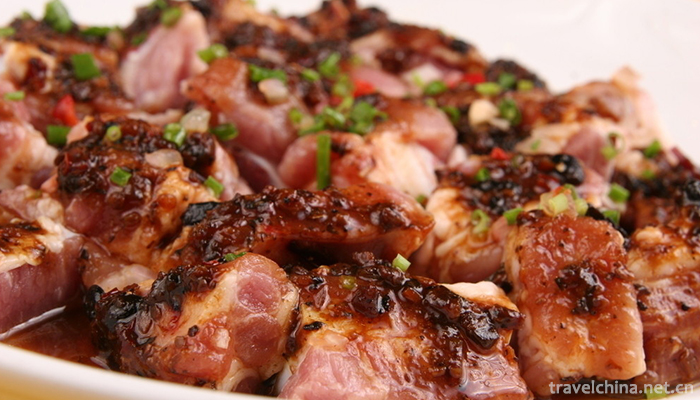
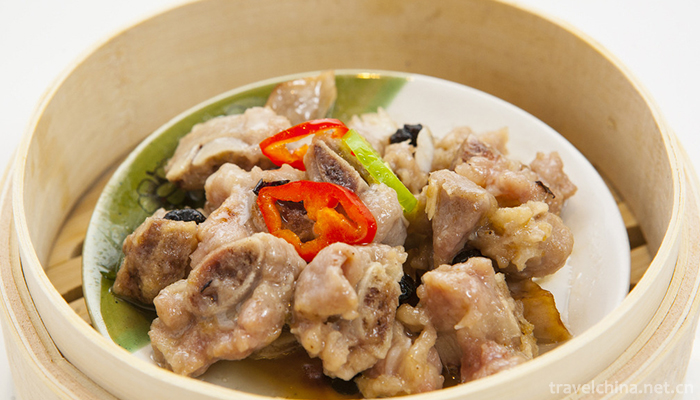
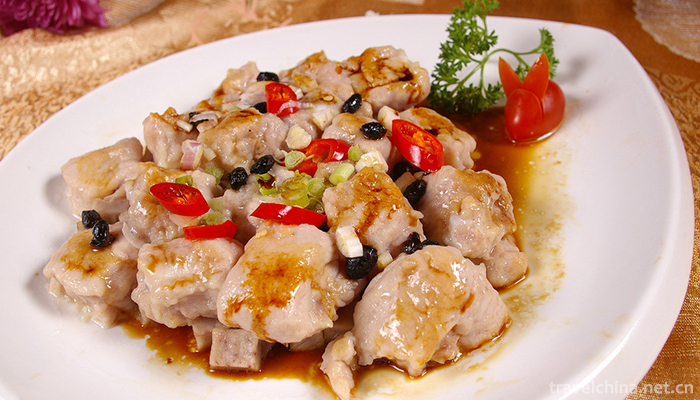
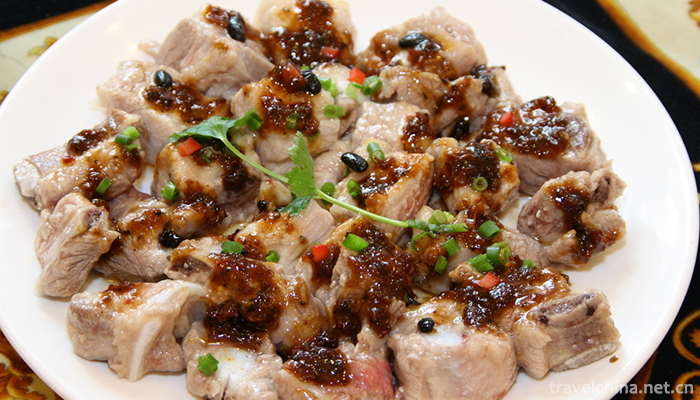
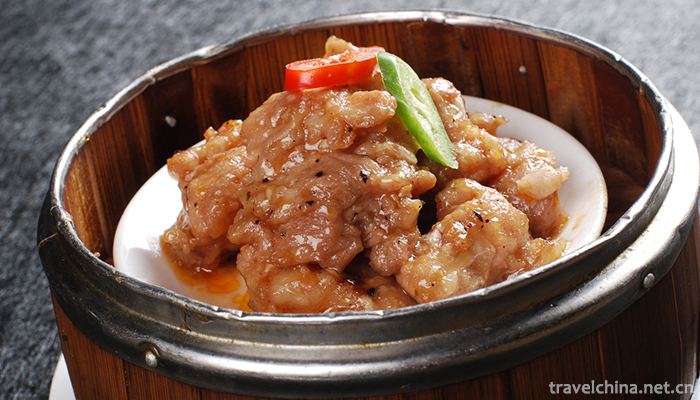
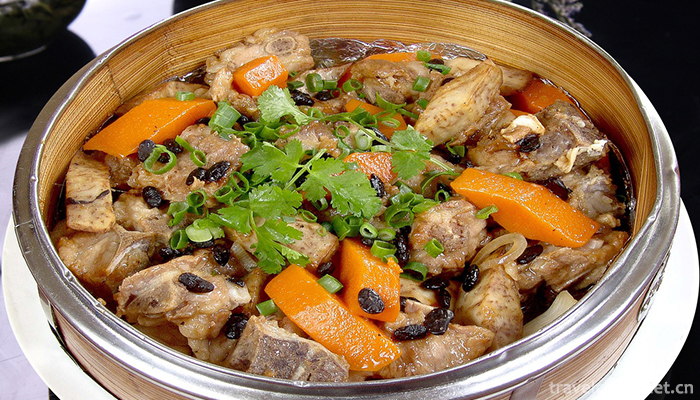
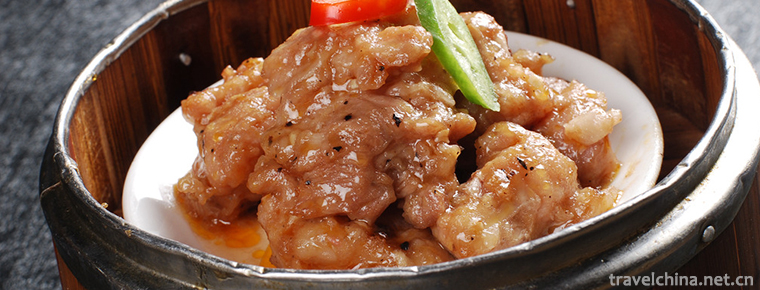
-
1.Sliced Fish in Hot Chili Oil
Boiled fish, also known as river boiled boiled fish and boiled fish fillet, was first popular in Cui Yun Township, Yubei District, Chongqing.
Time 2018-10-27 -
2.Ali Mountain
Mount Alishan, located 75 km east of Jiayi City, Taiwan Province, is located at an altitude of 2,216 meters. Its coordinates are 23 degrees north and 31 minutes east
Time 2018-10-30 -
3.Jiang Cudan Canton style pig leg
Except for those with internal fever, dry stool and weak spleen and stomach function, breast enlargement products can be used as a warm-up tonic in winter.
Time 2018-11-02 -
4.Buluotuo
Buluotuo, the traditional folk literature of Ganzhuang Mountain in Baise, Guangxi, China, is one of the national intangible cultural heritages.
Time 2018-12-15 -
5.Longzi Lake Scenic Area
Longzihu Scenic Area, located in Longzihu District of Bengbu City, Anhui Province, is a national AAAA-level tourist attraction, a national ecological demonstration area and a provincial-level scenic s
Time 2019-02-06 -
6.Chishan Scenic Area Shidao
Chishan Scenic Area of Shidao, located in the Shidao Management Area of Rongcheng City, the easternmost end of Shandong Peninsula, is a national 4A-level tourist attraction
Time 2019-02-08 -
7.Changshan Cheerful Ballads
In Changshan, the custom of applauding when marrying and bridging a new house has been popular among the people since ancient times for the sake of luck. The content of applause for marriage
Time 2019-04-16 -
8.Turn over to the nine floor
The Ninth Floor, also known as the Ninth Floor, is a traditional folk activity popular in northeastern Fujian and southern Zhejiang. It is mostly used in rituals such
Time 2019-04-29 -
9.Haha Opera
Haha Opera, also known as Liuzi Opera and Drinking Opera, is a local opera originated from the folk in Hebei Province. It is the first national intangible cultural heritage
Time 2019-05-02 -
10.Qiyang Opera
Qi Opera is one of the traditional local dramas in Hunan Province. It is also called Qiyang Band, Qiyang Opera in the early years of the Republic of China, and Qiyang Qidong Opera in the folk
Time 2019-06-10 -
11.Xiaolan Chrysanthemum Club
Xiaolan Town, located in the middle of the Pearl River Delta, is an important town in Zhongshan City, Guangdong Province. Xiaolan has the reputation of "Chrysanthemum City". Chrysanthemum cu
Time 2019-07-06 -
12.Chengdu Giant Panda Base tourist service
The tourist center is located 40 meters to the left of the entrance door of the scenic area (first floor of the Giant Panda Museum), with a building area of more than 400 square meters.
Time 2020-12-13